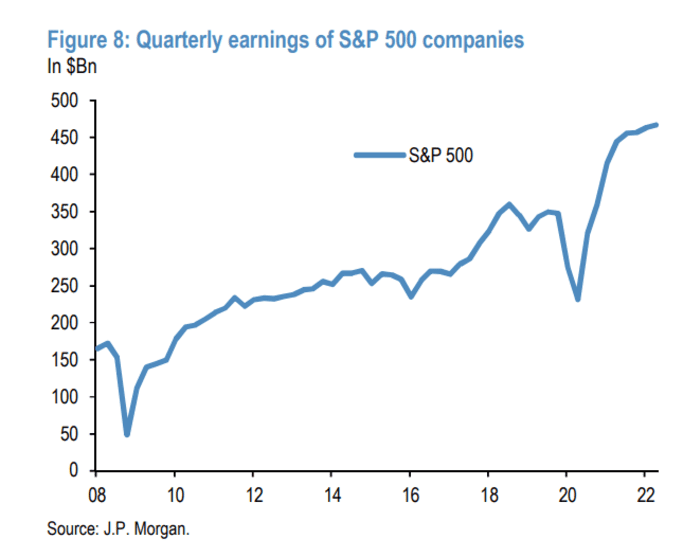Fearing a hawkish Fed? Here’s what’s likely limiting more downside in the stock market, according to JPMorgan’s Marko Kolanovic.
The stock market has been under pressure since the inflation report for August came in surprisingly strong last week, but JPMorgan Chase & Co.’s chief market strategist, Marko Kolanovic, doesn’t see this year’s drop getting much uglier despite a hawkish Federal Reserve.
“While we recognize that more hawkish central-bank pricing and the resulting increase in real yields are weighing on risk assets, we also believe that any downside from here likely would be limited,” Kolanovic said in a JPMorgan research note Monday. “Robust earnings, low investor positioning and well-anchored long-term inflation expectations should mitigate any downside in risk assets from here.”
Investors have been bracing for a jumbo rate hike from the Fed on Wednesday, the day central-bank chief Jerome Powell will hold a press conference on its latest policy decision as it battles high inflation. The S&P 500 is already down around 18% so far this year amid concern over rising interest rates and the persistently high cost of living in the U.S.
JPMorgan’s Kolanovic has a more optimistic view of the stock market compared with some other investors and analysts on Wall Street, including warnings from Morgan Stanley that equities could take another leg down and retest the 2022 low hit by the S&P 500 in June.
Read: ‘Some twisted logic about valuation multiples’: Stock-market investors appear complacent as rates rise, warns Morgan Stanley
Kolanovic acknowledges the weight of rising real yields and higher expectations for the Fed’s terminal rate on the market.
“Peak Fed pricing as implied by Fed funds futures is making new highs of 4.5%,” or 50 basis points above the previous high in June, he said. “Real yields are also making new highs,” with the real rate of the 10-year Treasury note surpassing 1% at almost 210 basis points above its level at the start of the year, said Kolanovic.
Real yields are adjusted for inflation.
In Kolanovic’s view, companies’ stronger-than-anticipated earnings this year help mitigate the downside for the stock market.
“Better-than-expected earnings growth is reminding investors that equities represent a real asset class that offers protection against inflation and is thus more attractive than nominal assets, like the vast majority of fixed income,” he said. “Even if we exclude energy, a sector that has clearly boosted earnings at index level, the decline in earnings has been rather small so far.”

While an earnings decline could become more significant if the unemployment rate begins moving “materially” higher and the U.S. falls into a deep or protracted recession, Kolanovic sees a potential backstop in the stock market.
“Even in this adverse scenario we believe that the Fed would be cutting rates by more than is currently priced in for 2023, thus backstopping equity markets and inducing higher” price-to-earnings multiples, he wrote.
Kolanovic also pointed to investor positioning as a mitigating factor on the downside, saying equity funds have lost more assets under management this year than they gained in 2021.
“In other words, retail investors have shifted back to end-2020 levels in terms of their equity allocation,” he said. Meanwhile, “institutional investors’ equity positions are also low,” he wrote, as indicated by “equity futures positions proxies” as well as “persistently low demand for hedging.”
As for longer-term inflation expectations in the U.S., Kolanovic noted that they’ve recently declined based on market measures as well as the University of Michigan’s survey.
“The stabilization in longer-term inflation expectations reduces fears of de-anchoring of U.S. inflation expectations, thus making a dovish Fed pivot easier in the future in the scenario where labor market indicators weaken enough to confirm a U.S. recession,” he said.
U.S. stocks closed higher Monday after a choppy trading session ahead of the Fed’s two-day policy meeting, with the Dow Jones Industrial Average DJIA,
The Federal Open Market Committee will begin its two day meeting on Tuesday, with its rate decision expected Wednesday afternoon.



